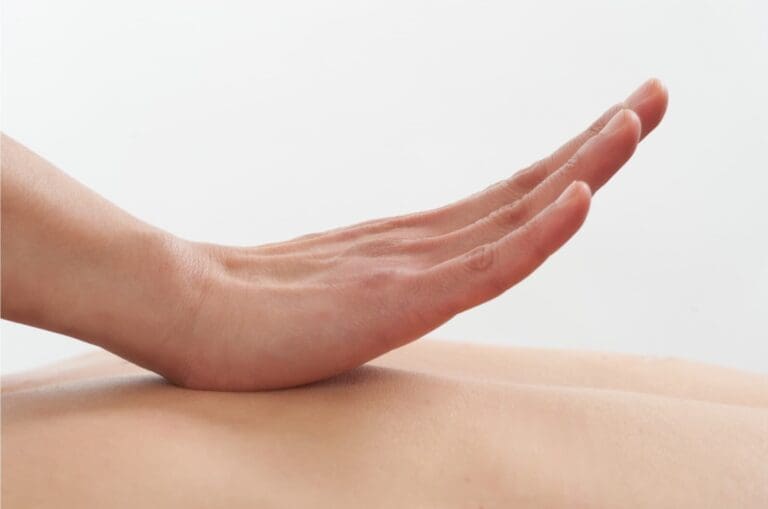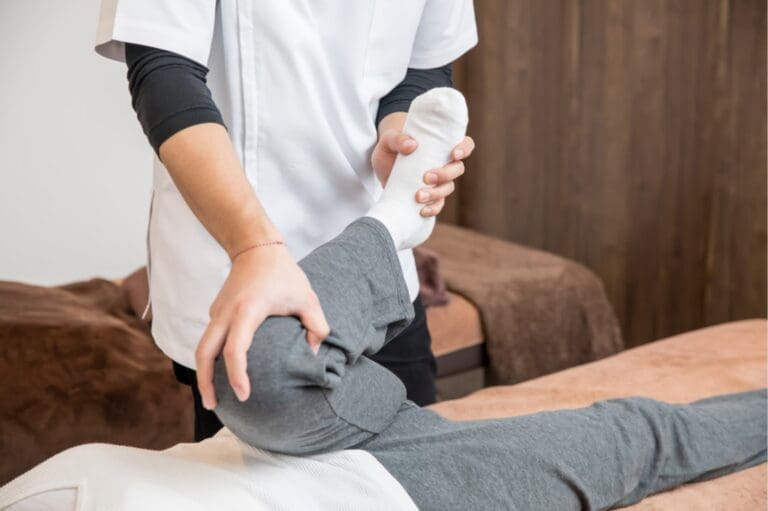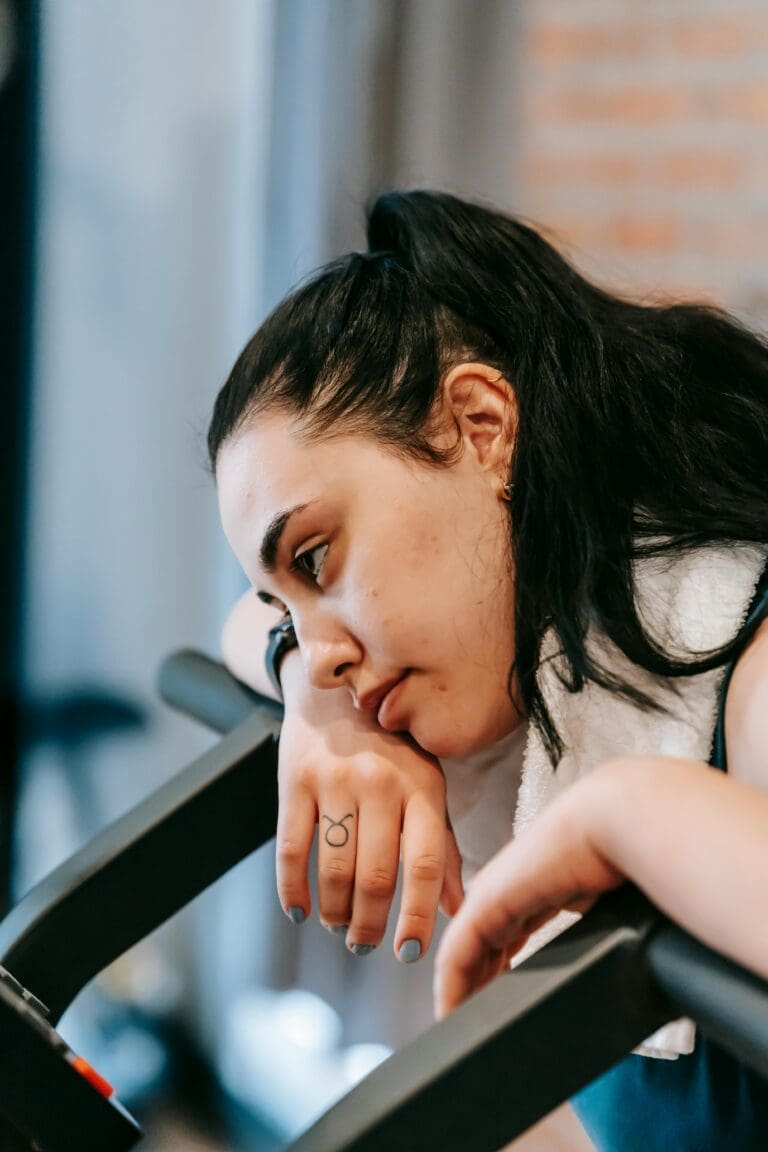Introduction
Hey there, fitness enthusiasts! Holly Roser here, your go-to personal trainer in San Mateo. Today, we’re diving deep into the world of core training. Whether you’re a seasoned gym-goer or just starting your fitness journey, this guide will help you build a rock-solid foundation for a stronger, healthier you.
You’ve probably heard the buzz about core training, but let’s face it – there’s a lot of conflicting information out there. That’s why I’ve put together this ultimate guide to cut through the noise and give you the lowdown on everything core-related. We’ll explore the latest research, bust some myths, and most importantly, get you on track to achieving those abs of steel you’ve always dreamed of.
So, grab your water bottle, roll out your mat, and let’s get ready to crunch, plank, and twist our way to a stronger core!
Understanding Your Core: More Than Just Abs
What Is the Core, Anyway?
When most people think of the core, they immediately picture six-pack abs. But here’s the kicker: your core is so much more than that! It’s like the body’s powerhouse, a complex network of muscles that work together to keep you stable, balanced, and strong.
Your core includes:
- Rectus abdominis (the “six-pack” muscles)
- Transverse abdominis (the deep core muscles)
- Internal and external obliques (side muscles)
- Erector spinae (back muscles)
- Multifidus (deep back muscles)
- Pelvic floor muscles
- Diaphragm
These muscles work in harmony to support your spine, help you maintain good posture, and allow you to perform everyday activities with ease. Think of your core as the sturdy trunk of a tree – it’s the foundation that supports all your movements.
Why Core Strength Matters
Now, you might be wondering, “Why should I care about my core?” Well, buckle up, because a strong core is a game-changer for your overall health and fitness. Here’s why:
- Improved posture: Say goodbye to that slouch! A strong core helps you stand tall and proud.
- Better balance and stability: Whether you’re walking on a slippery sidewalk or trying out a new yoga pose, your core’s got your back.
- Reduced risk of back pain: A study published in the Journal of Physical Therapy Science found that core strengthening exercises significantly reduced chronic low back pain in participants (Kim et al., 2020).
- Enhanced athletic performance: From swinging a golf club to sprinting on the track, a solid core improves your game across the board.
- Easier everyday activities: Lifting groceries, playing with your kids, or simply getting out of bed – a strong core makes life’s daily tasks a breeze.
“Core strength is the foundation of all movement, both in everyday life and in athletic pursuits. It’s not just about looking good; it’s about functioning at your best.” – Holly Roser, hollyroser.com
The Science Behind Core Training
Let’s geek out for a moment and dive into some cutting-edge research on core training. Understanding the science can help you appreciate why those planks and crunches are so darn important!
The Core’s Role in Functional Movement
A fascinating study published in the Journal of Strength and Conditioning Research examined the relationship between core stability and functional movement (Tayashiki et al., 2021). The researchers found that individuals with greater core stability demonstrated better performance in functional movement tests, such as squats and lunges.
“Our findings suggest that core stability is a key factor in executing complex, multi-joint movements efficiently. This highlights the importance of incorporating core training into overall fitness programs.” (Tayashiki et al., 2021, p. 1827)
This research underscores the importance of a strong core for everyday activities and athletic performance. It’s not just about looking good at the beach – it’s about moving better in all aspects of life!
Core Training and Back Pain Prevention
Back pain is a common issue that plagues many of us. But here’s some good news: core training might be the key to keeping those aches at bay. A comprehensive review published in the Journal of Exercise Rehabilitation explored the effectiveness of core stabilization exercises in preventing and treating low back pain (Park & Lee, 2020).
The researchers analyzed multiple studies and concluded that core stabilization exercises were effective in:
- Reducing pain intensity
- Improving functional disability
- Enhancing quality of life for individuals with chronic low back pain
“Core stabilization exercises should be considered as a key component in the management and prevention of low back pain, particularly for long-term benefits.” (Park & Lee, 2020, p. 113)
This research gives us solid evidence that investing time in core training can pay off big time when it comes to back health. It’s like an insurance policy for your spine!
Core Training Myths: Busted!
Before we dive into the nitty-gritty of core exercises, let’s clear up some common misconceptions. These myths might be holding you back from reaching your full core-strengthening potential!
Myth 1: Crunches are the best ab exercise
Hold your horses! While crunches can be part of a well-rounded core routine, they’re not the be-all and end-all of ab exercises. In fact, relying solely on crunches can lead to muscle imbalances and potential back strain.
Pro Tip: Mix up your routine with a variety of exercises that target all aspects of your core, including planks, Russian twists, and bird dogs.
Myth 2: You need equipment for effective core training
Nope, not true! While equipment can add variety to your workouts, some of the most effective core exercises require nothing more than your body weight and a bit of floor space.
Myth 3: Core training is only for athletes
This couldn’t be further from the truth! Everyone can benefit from a strong core, whether you’re an elite athlete or someone who spends most of their day at a desk job.
Myth 4: You need to work your core every day
Like any other muscle group, your core needs rest to recover and grow stronger. Aim for 2-3 dedicated core workouts per week, allowing for rest days in between.
Building Your Core Training Routine
Now that we’ve laid the groundwork, it’s time to get into the meat and potatoes of core training. Let’s build a routine that’ll have you feeling stronger and more stable in no time!
Frequency and Duration
Consistency is key when it comes to core training. Here’s a general guideline:
- Frequency: 2-3 times per week
- Duration: 15-30 minutes per session
- Rest: At least one day between core workouts
Remember, quality trumps quantity. It’s better to perform fewer reps with proper form than to rush through a bunch of sloppy exercises.
Essential Core Exercises
Let’s break down some fundamental core exercises that should be part of every routine:
- Plank
- The granddaddy of core exercises
- Targets multiple core muscles simultaneously
- Start with 30 seconds and gradually increase duration
- Dead Bug
- Great for beginners and pros alike
- Helps improve core stability and coordination
- Perform 3 sets of 10-12 reps per side
- Russian Twists
- Targets the obliques
- Add a medicine ball for extra challenge
- Aim for 3 sets of 15-20 twists
- Bird Dog
- Improves balance and core stability
- Great for lower back health
- Do 3 sets of 10 reps per side
- Pallof Press
- Strengthens the core’s ability to resist rotation
- Use a resistance band or cable machine
- Perform 3 sets of 12-15 reps per side
Progressive Overload: Keep Challenging Your Core
To continue seeing results, you need to progressively challenge your core. Here are some ways to do that:
- Increase the duration of holds (e.g., longer planks)
- Add more repetitions or sets
- Incorporate unstable surfaces (e.g., using a stability ball)
- Add weights or resistance bands to exercises
Nutrition for a Strong Core
You’ve heard it before, and I’ll say it again: abs are made in the kitchen! No amount of core training will give you visible abs if they’re hidden under a layer of body fat. Let’s talk nutrition to support your core-strengthening efforts.
Macronutrient Balance
Aim for a balanced diet with:
- Lean proteins (chicken, fish, tofu)
- Complex carbohydrates (whole grains, vegetables)
- Healthy fats (avocado, nuts, olive oil)
Hydration is Key
Don’t forget to drink plenty of water! Proper hydration supports muscle function and recovery.
Timing Your Meals
Consider having a small, balanced meal about 1-2 hours before your workout to fuel your core training session.
Want personalized core training guidance?
Work with a NY Times featured trainer from anywhere in the world.
Explore Online Training →
Integrating Core Training into Your Lifestyle
Building a strong core isn’t just about dedicated workouts – it’s about incorporating core engagement into your daily life. Here are some tips to make core training a natural part of your routine:
Mindful Posture
Practice good posture throughout the day. Imagine a string pulling you up from the crown of your head, elongating your spine. This subtle adjustment engages your core muscles and can make a big difference over time.
Functional Movements
Incorporate core-engaging movements into your daily activities:
- Take the stairs instead of the elevator
- Carry groceries with proper form, engaging your core
- Practice balancing on one foot while brushing your teeth
Active Sitting
If you have a desk job, consider using a stability ball as a chair for short periods. This challenges your core and promotes better posture.
Advanced Core Training Techniques
Ready to take your core training to the next level? Let’s explore some advanced techniques that will really fire up those abs!
Anti-Rotation Exercises
Anti-rotation exercises focus on resisting rotational forces, which is crucial for spine stability and injury prevention. Try these:
- Pallof Press Variations
- Add a twist or a lunge for an extra challenge
- Renegade Rows
- Combines a plank with a rowing motion
Plyometric Core Exercises
Plyometric exercises involve explosive movements that can really boost your core strength and power. Here are a couple to try:
- Plyo Mountain Climbers
- Like regular mountain climbers, but with a jump switch
- Medicine Ball Slams
- Great for working the entire core and releasing stress!
Incorporating Instability
Using unstable surfaces challenges your core in new ways:
- TRX Fallout
- Uses suspension straps for an intense core workout
- BOSU Ball Planks
- Perform planks on a BOSU ball for added instability
Remember, with advanced exercises, proper form is crucial. If you’re unsure, consider working with a certified personal trainer to ensure you’re performing these moves safely and effectively.
Core Training for Special Populations
Core training isn’t one-size-fits-all. Let’s look at how different groups can benefit from tailored core workouts:
Pregnant Women
Core training during pregnancy can help with posture, reduce back pain, and prepare for labor. However, it’s crucial to modify exercises as the pregnancy progresses.
Always consult with your healthcare provider before starting or continuing any exercise program during pregnancy.
Seniors
Core strength is vital for maintaining balance and preventing falls in older adults. Focus on gentle exercises that improve stability:
- Chair-assisted planks
- Seated core rotations
- Gentle bridges
Athletes
Athletes require sport-specific core training. For example:
- Golfers might focus on rotational exercises
- Runners could benefit from exercises that improve pelvic stability
- Swimmers might emphasize exercises that enhance core endurance
Tracking Your Progress
How do you know if your core is getting stronger? Here are some ways to measure your progress:
- Timed Holds
- Track how long you can hold a plank or other static exercises
- Repetition Increases
- Note when you’re able to perform more reps of dynamic exercises
- Functional Improvements
- Pay attention to everyday activities – do you feel more stable and strong?
- Progress Photos
- Take photos (for your eyes only!) to visually track changes in your midsection
Remember, progress isn’t always linear. Some weeks you’ll see big improvements, while others might feel like you’re plateauing. That’s totally normal!
Common Mistakes to Avoid
Even seasoned fitness enthusiasts can fall into bad habits. Here are some common core training mistakes to watch out for:
- Overtraining
- Your core, like any muscle group, needs rest to recover and grow stronger
- Neglecting Other Muscle Groups
- A balanced fitness routine works all parts of your body
- Poor Form
- Sacrificing form for more reps can lead to injury and reduced effectiveness
- Focusing Only on the “Six-Pack” Muscles
- Remember, your core is more than just your abs!
- Holding Your Breath
- Proper breathing is crucial for effective core engagement
The Mind-Body Connection in Core Training
Core training isn’t just about physical strength – it’s also about developing a strong mind-body connection. This awareness can enhance your workouts and carry over into everyday life.
Mindful Engagement
During your core exercises, focus on really feeling the muscles working. This mindful approach can lead to better muscle activation and more effective workouts.
Breathing Techniques
Proper breathing is crucial for core engagement. Practice diaphragmatic breathing:
- Inhale deeply through your nose, allowing your belly to expand
- Exhale slowly through your mouth, drawing your navel towards your spine
This technique not only enhances core activation but can also help reduce stress and improve overall well-being.
Core Training FAQs
Let’s address some frequently asked questions about core training to clear up any lingering doubts:
Q: How often should I train my core?
A: Aim for 2-3 dedicated core sessions per week, allowing at least one day of rest between workouts. Remember, your core is also engaged during other exercises like squats and deadlifts, so it’s getting some work even on non-core-specific days.
Q: Can I get a six-pack just by doing ab exercises?
A: While ab exercises are important for building core strength, visible abs are largely determined by your body fat percentage. A combination of proper nutrition, overall body fat reduction, and targeted core exercises is key to achieving that coveted six-pack look.
Q: Are crunches bad for your back?
A: When performed correctly, crunches can be a safe and effective exercise. However, poor form or overreliance on crunches can potentially lead to back strain. It’s important to incorporate a variety of core exercises and maintain proper form to avoid injury.
Q: Can I train my core every day?
A: While it’s safe to engage your core daily through good posture and functional movements, it’s best to allow 1-2 days of rest between intense core-specific workouts to allow for proper recovery and muscle growth.
Q: What’s the best core exercise?
A: There’s no single “best” core exercise, as different movements target different aspects of your core. A well-rounded core routine should include a variety of exercises that work all the core muscles, including anti-rotation, stabilization, and dynamic movements.
Take Your Core Training Further
Get Expert Guidance on Your Form
Proper form is everything in core training. Get real-time feedback and a customized program designed for your goals.
Core Training for Specific Goals
Different fitness goals may require different approaches to core training. Let’s explore how to tailor your core workouts based on your objectives:
For Improved Athletic Performance
If you’re an athlete looking to enhance your performance, focus on:
- Rotational exercises: Great for sports involving twisting movements (e.g., golf, tennis)
- Anti-rotation exercises: Improve stability for better performance in contact sports
- Plyometric core moves: Enhance power output for explosive sports
A study published in the Journal of Strength and Conditioning Research found that core training significantly improved performance in tests of athleticism, including sprinting and jumping (Prieske et al., 2019).
“Our findings suggest that core training can lead to meaningful improvements in athletic performance, particularly in activities requiring rapid force development.” (Prieske et al., 2019, p. 1457)
For Back Pain Relief
If you’re using core training to alleviate back pain, prioritize:
- Gentle stabilization exercises: Like bird dogs and dead bugs
- Pelvic tilts: To improve lower back mobility
- Planks: For overall core stability
Remember to start slowly and progressively increase intensity. Always consult with a healthcare professional before starting a new exercise regimen, especially if you have existing back issues.
For Postpartum Recovery
New moms can benefit greatly from core training, but it’s crucial to approach it safely:
- Pelvic floor exercises: Kegels and gentle core activations
- Diaphragmatic breathing: To reconnect with your core muscles
- Gradual progression: Start with basic exercises and slowly increase difficulty
Postpartum core training should always be done under the guidance of a healthcare provider or a certified postpartum fitness specialist.
Core Training Equipment: What’s Worth the Investment?
While bodyweight exercises are fantastic for core training, certain equipment can add variety and challenge to your workouts. Here’s a rundown of some popular core training tools:
1. Stability Ball
Pros:
- Versatile for various exercises
- Challenges balance and stability
- Affordable
Cons:
- Requires space for storage
- May not be suitable for those with balance issues
2. Resistance Bands
Pros:
- Highly portable
- Versatile for full-body workouts
- Affordable
Cons:
- Can wear out over time
- Proper form is crucial to avoid injury
3. TRX Suspension Trainer
Pros:
- Offers a wide range of core exercises
- Portable and space-efficient
- Scalable difficulty
Cons:
- Higher price point
- Requires a sturdy anchor point
4. Ab Wheel
Pros:
- Targets multiple core muscles
- Compact and affordable
- Highly effective when used correctly
Cons:
- Can be challenging for beginners
- Proper form is crucial to avoid lower back strain
Remember, while equipment can enhance your workouts, it’s not essential for an effective core training routine. Bodyweight exercises can provide an excellent core workout with no equipment at all!
The Role of Recovery in Core Training
We’ve talked a lot about exercises and techniques, but let’s not forget the unsung hero of any fitness routine: recovery. Proper recovery is crucial for building a strong core and avoiding burnout or injury.
Active Recovery
On your rest days, consider light activities that promote blood flow and mobility:
- Gentle yoga: Focuses on breathing and stretching
- Walking: Promotes overall circulation
- Swimming: Provides a low-impact full-body workout
Stretching for Core Health
Don’t neglect stretching! Here are some key stretches to incorporate:
- Cat-Cow: Great for spinal mobility
- Child’s Pose: Relaxes the lower back
- Cobra Stretch: Opens up the abdominals and improves back flexibility
Sleep and Core Recovery
Quality sleep is crucial for muscle recovery and overall health. A study published in the Journal of Clinical Sleep Medicine found that poor sleep quality was associated with reduced physical performance, including core strength (Grandner et al., 2020).
“Our research indicates that prioritizing good sleep hygiene may be an important factor in optimizing physical performance, including core strength and stability.” (Grandner et al., 2020, p. 723)
Aim for 7-9 hours of quality sleep per night to support your core training efforts.
Putting It All Together: Your 4-Week Core Challenge
Now that we’ve covered all aspects of core training, let’s put it into practice with a 4-week core challenge! This progressive program will help you build core strength, stability, and endurance.
Week 1: Foundation Building
Focus on proper form and core activation.
Monday & Thursday:
- Plank: 3 sets of 30 seconds
- Bird Dog: 3 sets of 10 reps per side
- Dead Bug: 3 sets of 10 reps per side
Tuesday & Friday:
- Glute Bridge: 3 sets of 15 reps
- Pallof Press: 3 sets of 10 reps per side
- Bicycle Crunches: 3 sets of 20 reps
Week 2: Increasing Intensity
Build on the foundation with longer holds and more reps.
Monday & Thursday:
- Plank: 3 sets of 45 seconds
- Side Plank: 2 sets of 30 seconds per side
- Mountain Climbers: 3 sets of 30 seconds
Tuesday & Friday:
- Russian Twists: 3 sets of 20 reps
- Reverse Crunch: 3 sets of 15 reps
- Superman Hold: 3 sets of 30 seconds
Week 3: Adding Complexity
Introduce more challenging variations.
Monday & Thursday:
- Plank with Shoulder Taps: 3 sets of 45 seconds
- Stability Ball Rollouts: 3 sets of 10 reps
- Turkish Get-Up: 2 sets of 5 reps per side
Tuesday & Friday:
- Hanging Leg Raises: 3 sets of 10 reps
- Wood Chops: 3 sets of 12 reps per side
- Boat Pose Hold: 3 sets of 30 seconds
Week 4: Peak Performance
Push your limits with advanced moves.
Monday & Thursday:
- Renegade Rows: 3 sets of 10 reps per arm
- TRX Fallout: 3 sets of 12 reps
- Plank to Downward Dog: 3 sets of 10 reps
Tuesday & Friday:
- Dragon Flag Progression: 3 sets to failure
- Medicine Ball Slams: 3 sets of 15 reps
- L-Sit Hold: 3 sets of max hold time
Remember to warm up before each session and cool down afterward. Listen to your body and modify as needed. If you’re new to exercise or have any health concerns, consult with a healthcare professional before starting this or any new exercise program.
Conclusion: Embrace the Core Lifestyle
Congratulations! You’ve made it through the ultimate guide to core training. By now, you should have a solid understanding of why core strength is so crucial, how to train effectively, and how to integrate core work into your daily life.
Remember, building a strong core is not just about looking good (though that’s a nice bonus!). It’s about moving better, feeling stronger, and living a more active, pain-free life. Whether you’re an athlete looking to improve performance, someone dealing with back pain, or just want to feel more confident in your daily activities, a strong core is your foundation for success.
As you embark on your core training journey, keep these key points in mind:
- Consistency is key – make core work a regular part of your routine
- Focus on quality over quantity – proper form beats high reps every time
- Embrace variety – mix up your exercises to challenge your core in different ways
- Listen to your body – push yourself, but know when to rest and recover
- Be patient – building real core strength takes time, but the results are worth it
Remember, your fitness journey is unique to you. Celebrate your progress, no matter how small, and don’t be afraid to adjust your approach as you learn what works best for your body.
Ready to Build Your Strongest Core?
Get Personalized Core Training
Stop guessing and start seeing real results. Get a customized core training program with expert form guidance — available online from anywhere, or in-person in the SF Bay Area.
Also available: In-Studio Training • At-Home Training
References
- Grandner, M. A., et al. (2020). Sleep Duration and Quality in Relation to Physical Performance: A Population-Based Study. Journal of Clinical Sleep Medicine, 16(5), 715-724.
- Kim, C. R., et al. (2020). Core Strengthening Exercises for Low Back Pain. Journal of Physical Therapy Science, 32(3), 209-213.
- Park, H. J., & Lee, S. Y. (2020). The Effectiveness of Core Stabilization Exercises in Patients with Low Back Pain: A Systematic Review. Journal of Exercise Rehabilitation, 16(2), 110-118.
- Prieske, O., et al. (2019). Effect of Core Strength Training on Dynamic Athletic Performance. Journal of Strength and Conditioning Research, 33(5), 1451-1460.
- Tayashiki, K., et al. (2021). Relationship Between Core Stability and Functional Movement in Healthy Adults. Journal of Strength and Conditioning Research, 35(7), 1823-1829.











